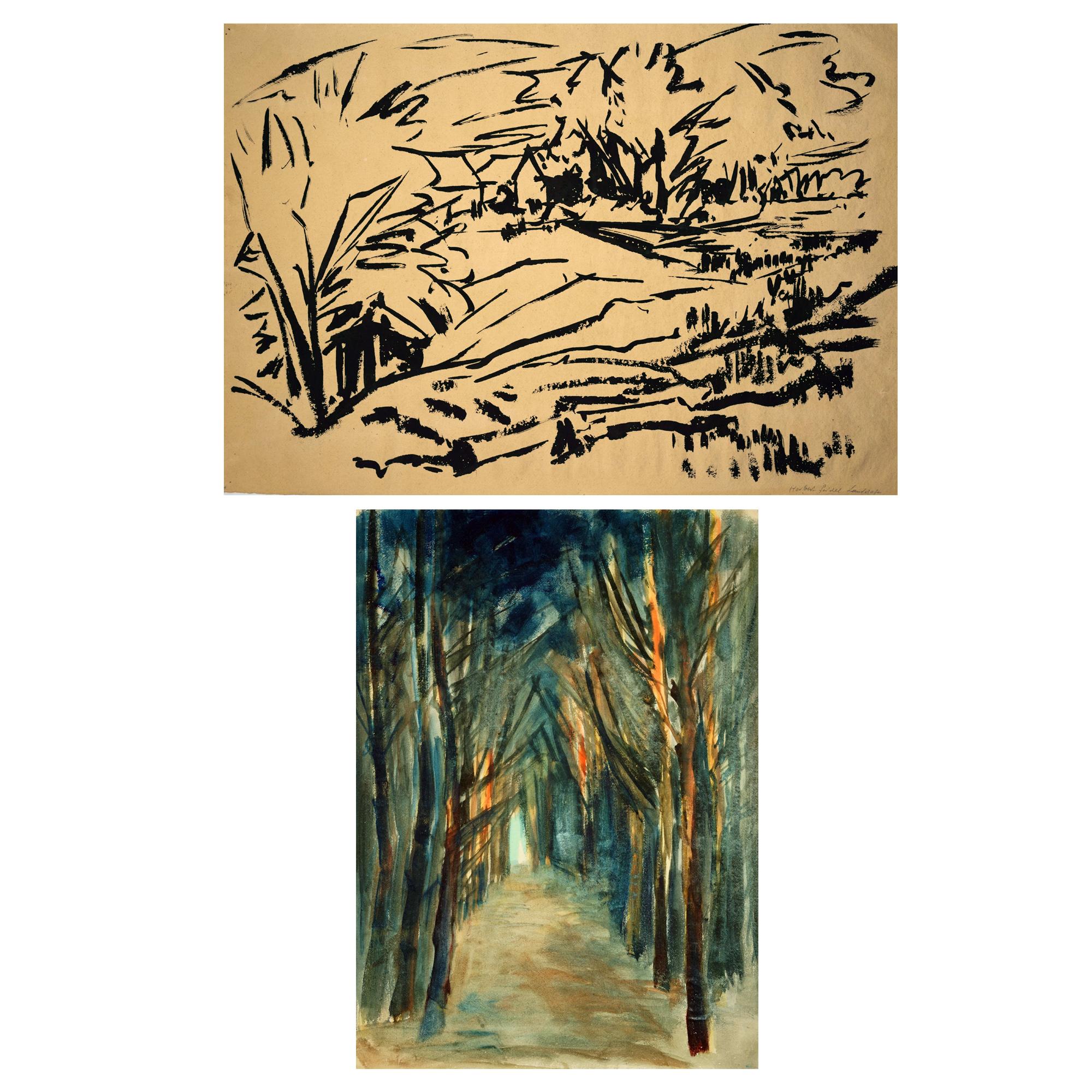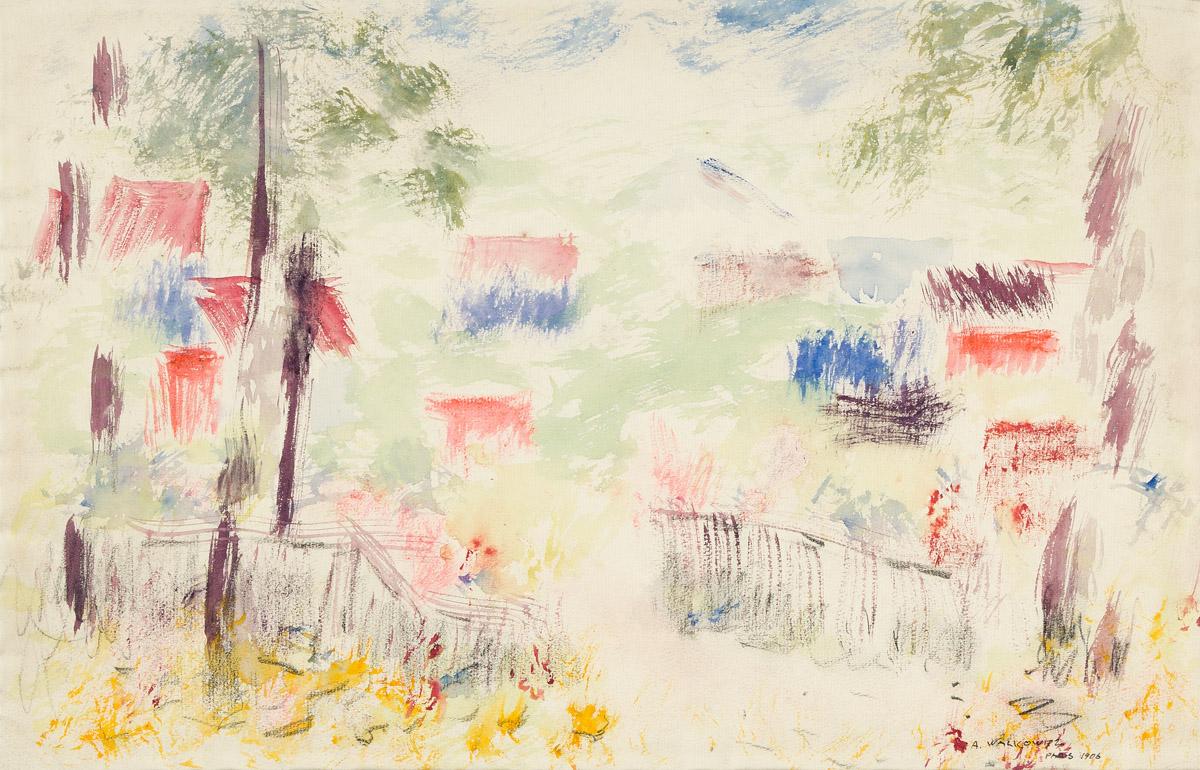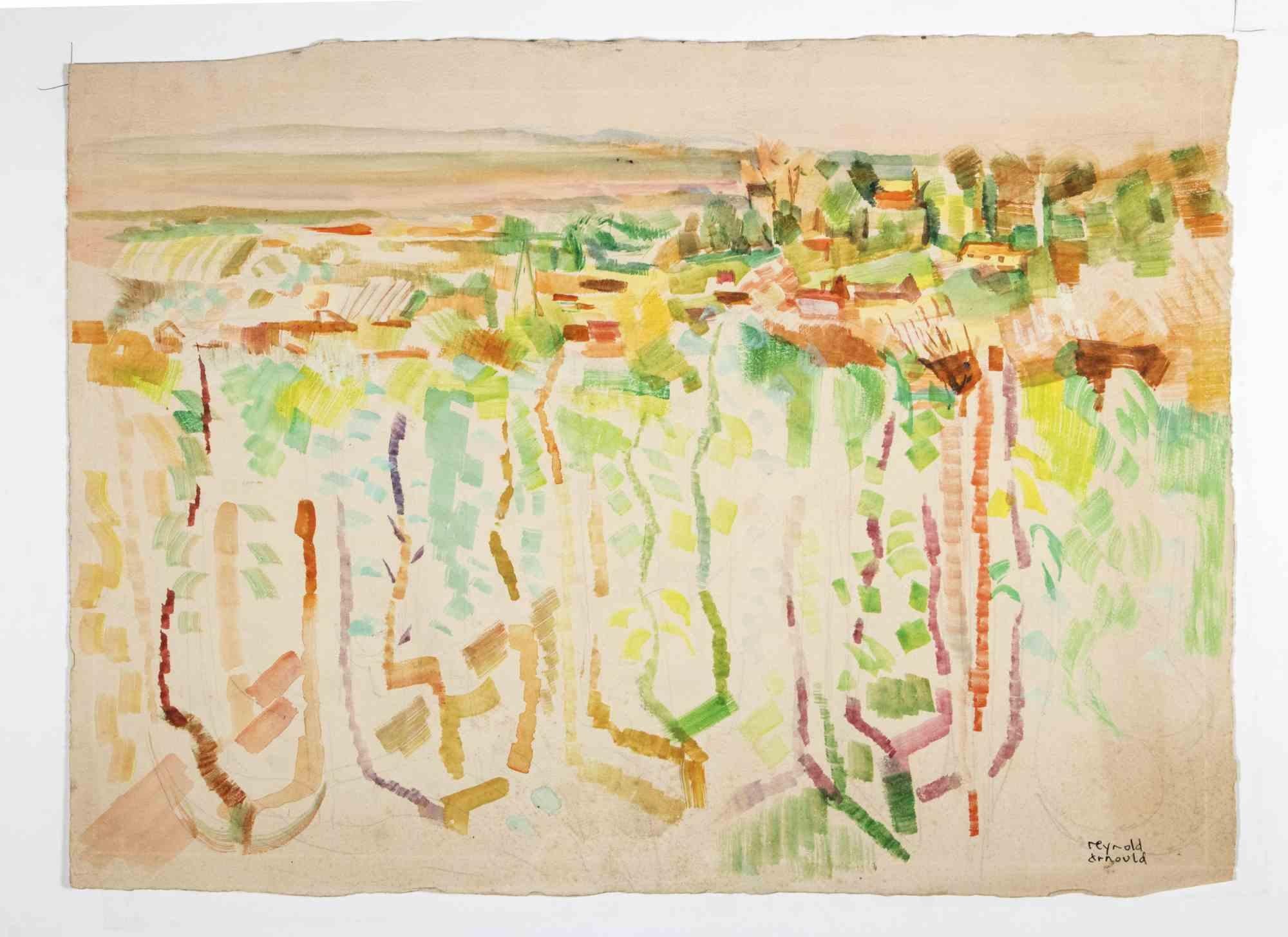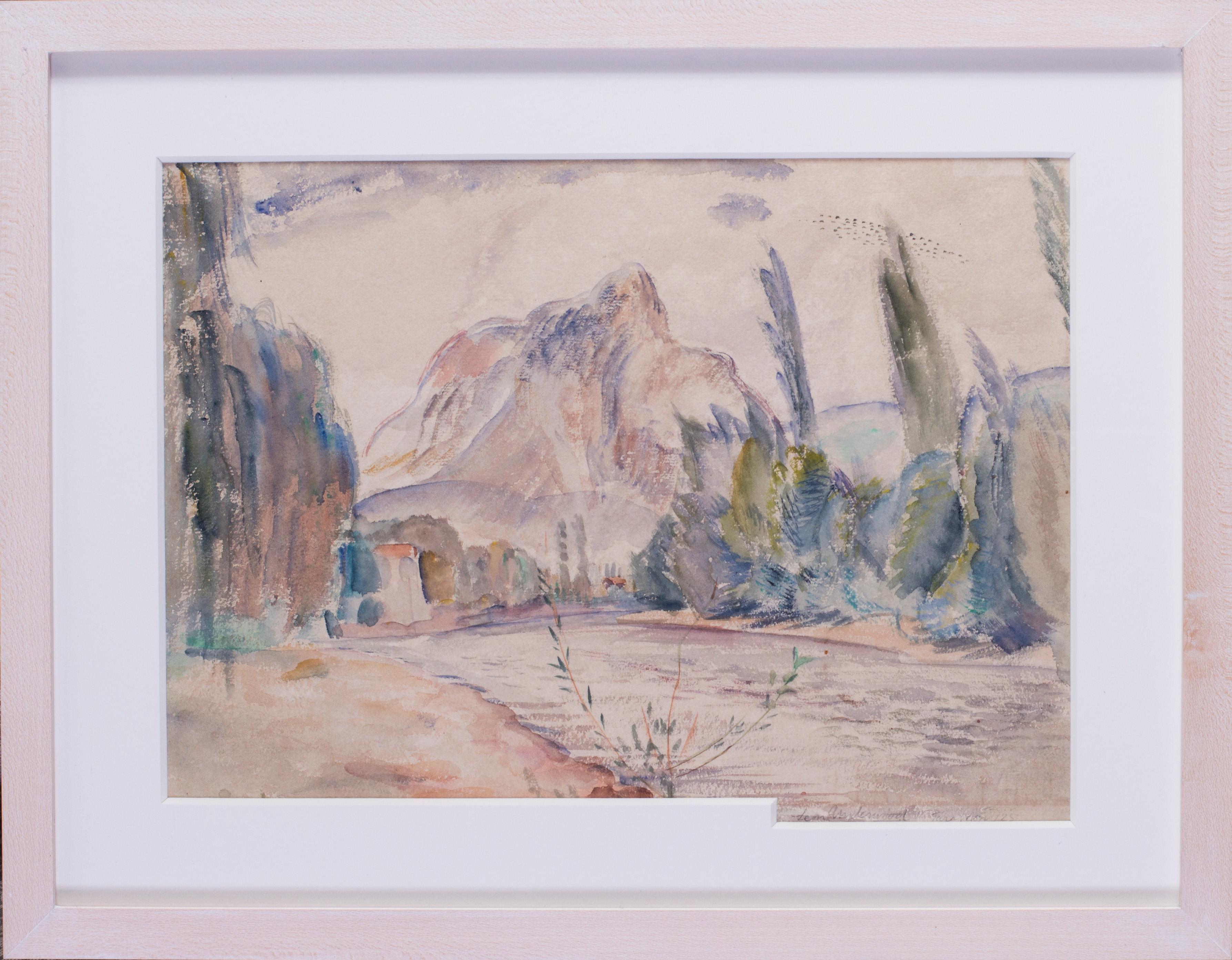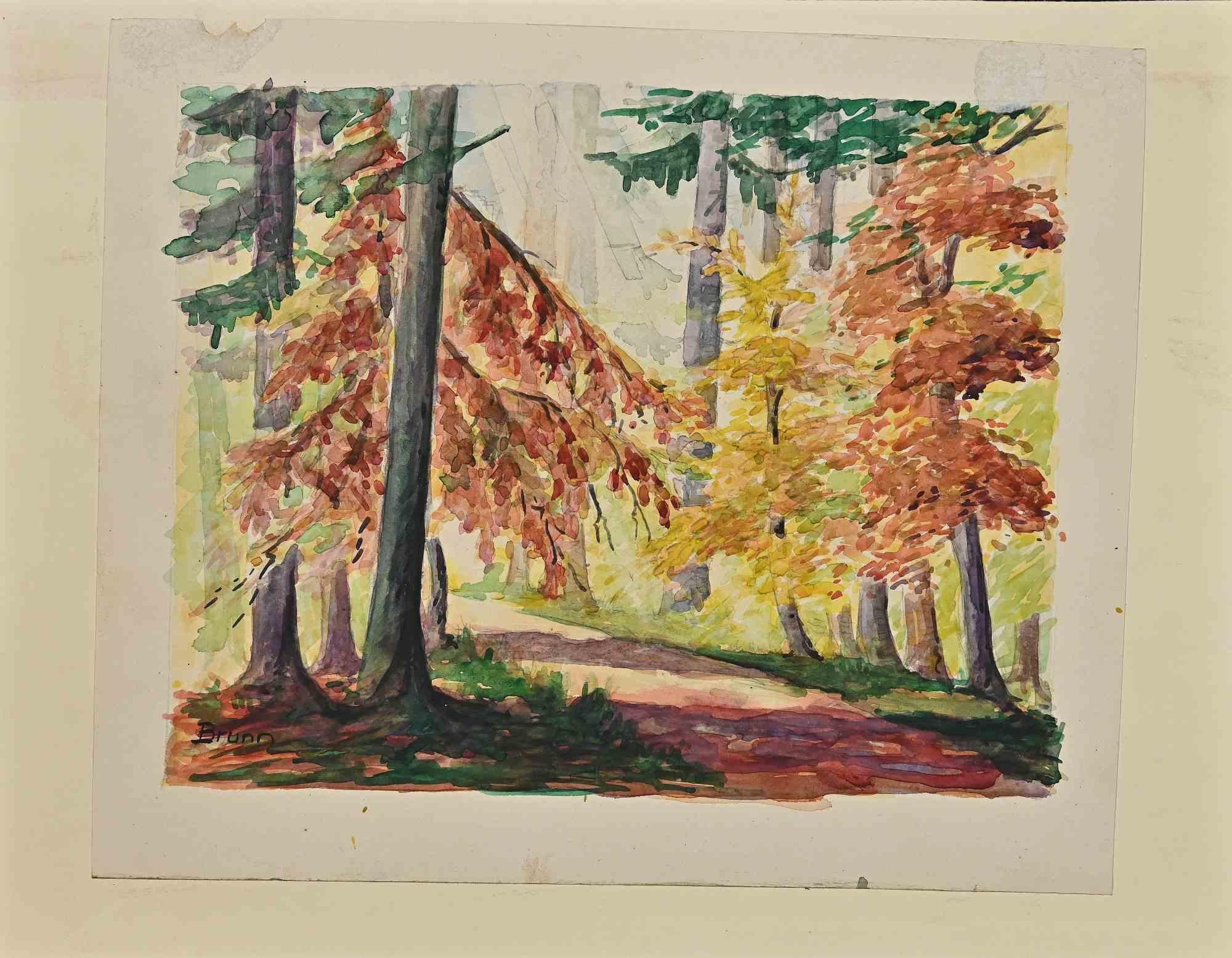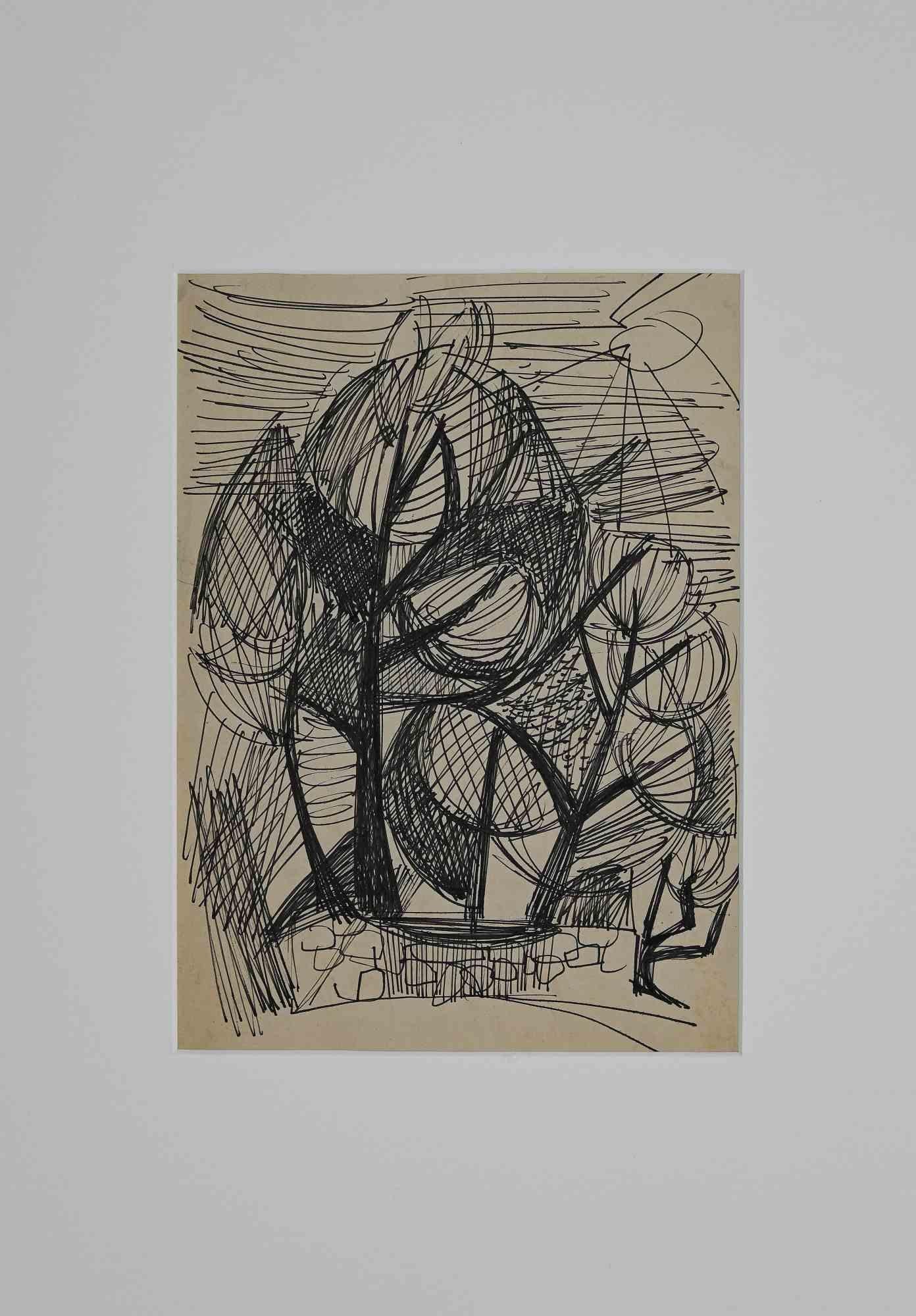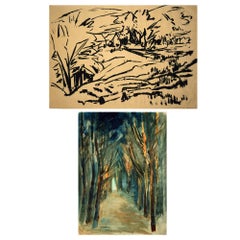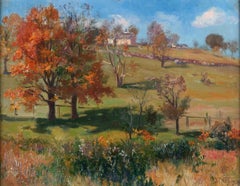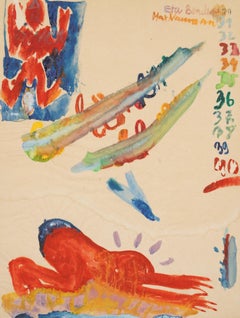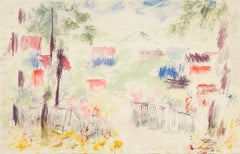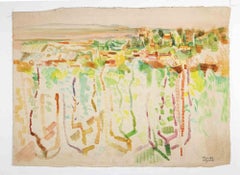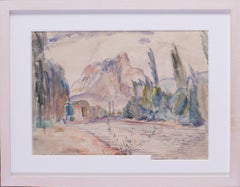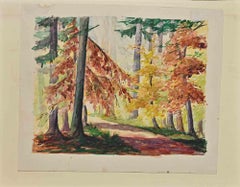Items Similar to Autumn verso Summer Landscape / - Imagined Landscape -
Want more images or videos?
Request additional images or videos from the seller
1 of 13
Herbert SeidelAutumn verso Summer Landscape / - Imagined Landscape -1953
1953
$420.35
£309.58
€350
CA$571.85
A$635.45
CHF 332.98
MX$7,792.64
NOK 4,246.98
SEK 3,995.41
DKK 2,664.50
Shipping
Retrieving quote...The 1stDibs Promise:
Authenticity Guarantee,
Money-Back Guarantee,
24-Hour Cancellation
About the Item
Seidel, Herbert (1906-1974), Autumn verso Summer Landscape, 1953
Herbert Seidel (1906 Berlin - 1974 Rüdersdorf), Autumn verso Summer Landscape, 1953. India ink on grained, bleached paper, 40.5 x 58 cm, signed “Herbert Seidel” in lead on the front, inscribed “Herbst” and dated “1953”.
- Pinholes in the corners, slight creases and minimally wavy
- Imagined Landscape -
A master of woodcut, Herbert Seidel draws inspiration for his paintings from the aesthetic effect of this technique. The broad black strokes look like the lines of a woodcut, although the line structures here are much more expressive, because in the letterpress process of woodcutting the areas formed by the cut wood are printed. Nevertheless, the black lines in particular echo the effect of the woodcut, and the shapes of the houses, which are only outlined, are based on the pictorial idea of the woodcut. The branches, treetops, and mountains are only hinted at, so that they seem almost incomplete, but it is precisely through these minimal settings that our imagination is stimulated to see the landscape in the outlines of the forms.
By making the artistic experience of the woodcut fruitful for painting, an extremely expressive landscape is created, which we complete with our eyes and thus open up imaginatively.
The reverse side depicts a summer landscape with temple-like architecture, over which the sun shines in all its glory. The fence-like enclosure lends the architecture, flanked by trees, a sacredness that is reinforced by the sun as a symbol of God. Herbert Seidel's struggle to establish new sacred imagery is evident here.
About the artist
Herbert Seidel was a German painter and printmaker best known for his woodcuts of Christian themes. Taking modernism as his starting point, he sought to revive sacred imagery. At the same time, he distinguished himself with innovative landscape painting.
GERMAN VERSION
Herbert Seidel (1906 Berlin - 1974 Rüdersdorf), Herbst verso Sommerlandschaft, 1953. Tusche auf genarbtem geblichen Papier, 40,5 x 58 cm, vorderseitig in Blei mit „Herbert Seidel“ signiert, als „Herbst“ bezeichnet und auf „1953“ datiert.
- An den Ecken Nadellöcher, leichte Knickspuren und minimal gewellt
- Imaginierte Landschaft -
Als Meister des Holzschnitts lässt sich Herbert Seidel von der ästhetischen Wirkung dieser Technik für seine Malerei inspirieren. Die breiten schwarzen Striche wirken wie Lineaturen eines Holzschnitts, wobei die Liniengefüge hier weit expressiver sind, da beim Hochdruckverfahren des Holzschnitts die durch das weggeschnittene Holz geformten Flächen gedruckt werden. Dennoch greifen gerade die schwarzen Lineaturen die Wirkung des Holzschnitts auf und die einzig in Umrissen angedeuteten Formen der Häuser liegt das bildnerische Denken des Holzschnitts zugrunde. Die Äste, Baumkronen und Berge werden allerdings nur punktuell angedeutet, so dass sie beinahe unvollständig wirken, aber gerade durch diese minimalen Setzungen wird unsere Imagination animiert, die Landschaft in die Formandeutungen hineinzusehen.
Durch die Fruchtbarmachung der künstlerischen Erfahrung mit dem Holzschnitt für die Malerei entsteht eine äußerst expressiv wirkende Landschaft, die wir mit dem Auge ergänzen und dadurch imaginativ erschließen.
Rückseitig ist eine Sommerlandschaft mit einer tempelartigen Architektur zu sehen, über der die Sonne in ihrer vollen Strahlkraft steht. Die zaunartige Umfriedung verleiht der baumflankierten Architektur eine von der Sonne als Symbol Gottes verstärkte Sakralität. Hier zeigt sich Herbert Seidels Ringen um die Etablierung neuer sakraler Bildformen.
zum Künstler
Herbert Seidel war ein deutscher Maler und Grafiker, der vor allem durch seine Holzschnitte christlicher Themen Bekanntheit erlangte. Dabei versuchte er, von der Moderne ausgehend, die sakrale Bildsprache zu revitalisieren. Gleichzeitig tat er sich mit einer innovativen Landschaftsmalerei hervor.

About the Seller
5.0
Gold Seller
Premium sellers maintaining a 4.3+ rating and 24-hour response times
Established in 2014
1stDibs seller since 2023
20 sales on 1stDibs
- ShippingRetrieving quote...Shipping from: Berlin, Germany
- Return Policy
Authenticity Guarantee
In the unlikely event there’s an issue with an item’s authenticity, contact us within 1 year for a full refund. DetailsMoney-Back Guarantee
If your item is not as described, is damaged in transit, or does not arrive, contact us within 7 days for a full refund. Details24-Hour Cancellation
You have a 24-hour grace period in which to reconsider your purchase, with no questions asked.Vetted Professional Sellers
Our world-class sellers must adhere to strict standards for service and quality, maintaining the integrity of our listings.Price-Match Guarantee
If you find that a seller listed the same item for a lower price elsewhere, we’ll match it.Trusted Global Delivery
Our best-in-class carrier network provides specialized shipping options worldwide, including custom delivery.More From This Seller
View AllLandscape verso Forest interior / - Landscape as a space of imagination -
Located in Berlin, DE
Herbert Seidel (1906 Berlin - 1974 Rüdersdorf), Landscape verso Forest interior, around 1950. India ink on grained, bleached paper, 40.5 x 58 cm, signed “Herbert Seidel” in pencil on...
Category
1950s Abstract Landscape Drawings and Watercolors
Materials
Paper
Autumn Landscape in Sunlight - Indian Summer -
Located in Berlin, DE
Frederick Vezin (1859 Torresdale Philadelphia - 1933 Düsseldorf), Autumn Landscape in the Sunlight, oil on canvas, mounted on cardboard, 32 x 41 cm (inside measurement), 44 x 51 cm (frame), signed and dates lower right "F. Vezin. [19]05".
- Cardboard slightly curved, small inconspicuous retouch at the centre of the upper edge of the picture.
About the artwork
Although the painting appears to be a sketch, Frederick Vezin considered it to be a finished work of art, as evidenced by his signature on the lower right. And it is precisely this sketchy quality that leads to an understanding of the painting, which was certainly created in the landscape itself: the natural phenomena were to be depicted artistically at the moment of their observation. This is not done by meticulously sketching nature, but - and here Vezin follows the teaching of French Impressionism - by illustrating nature in its visual fullness. The artist's eye is, as it were, immersed in the visuality of nature, which is made visible by his hand. The painting is therefore not a reflection of the landscape, but its artistic intensification.
This intensification also includes the fact that the foreground of the painting - corresponding to the field of vision - eludes a detail-oriented close-up view. Instead, the spatula-like application of paint, the vertical structure of which corresponds to the structure of the floral growth, has the effect of making nature tangible in its colourful substance.
At the same time, the foreground, which remains indeterminate in its concrete objectivity, creates an atmospheric space that connects with the actual protagonist of the picture, the group of trees, which flares up in shades of red and brown. Here, too, the leaves are more speckled than clearly outlined. It is precisely this 'sketchiness' that opens up a visual experience that makes the landscape accessible in its visual fullness, thus revealing its essence.
In addition to this abundance, the landscape is presented as a structure of order in that the composition of the picture makes the composition of the landscape visible. For example, the group of trees forms a distinct dark green shadow, which is repeated in the shadows cast by the trees behind it. A patterned diagonal axis is created in the picture, which is composed in this way by the landscape itself.
Strictly speaking, this is a cultivated landscape: a fence at the bottom and a low stone wall at the top, running from left to right, are two elements that also have a strong compositional effect. And on the top of the hill, a stone house is embedded in the landscape as the brightest surface in the picture. Nature and culture here form a harmonious synthesis, giving the painting an Arcadian touch.
In order to give the landscape as much space as possible, the horizon line is raised, but the design of the sky is also crucial. The clouds, combined with the shapes of the trees, create a bright blue sky. To the European eye, such a sky is reminiscent of a summer landscape. Accordingly, within the seasonal cycle, the blue sky is reserved for summer, and French Impressionism is also primarily an ode to summer. In Vezin's painting, however, the brilliant blue sky stands above an autumnal landscape, some of the trees even defoliated. It can therefore be assumed that the painting was made not in Europe but in the United States, and that it illustrates the proverbial Indian summer, making Frederick Vezin a pioneer of American landscape painting.
About the artist
Frederick Vezin was the son of a French immigrant to the United States and a German-born mother. This predestined him to promote artistic exchange between the old and new worlds. Having spent part of his schooling in Germany, in 1876, at the age of 20, he enrolled at the Düsseldorf Academy of Art, where he studied with Peter Janssen the Elder, Eduard von Gebhardt and Wilhelm Sohn, among others. He graduated in 1883, settled in Munich and returned to Düsseldorf in 1895, where he lived until his death in 1933.
A native of the United States, he travelled to the country frequently and became a popular portrait and society painter. His artistic talent, however, was most evident in his landscape paintings. Trained in French Impressionism, he developed a virtuoso use of colour and a free brushwork that remained tied to the landscape motif, opening up the landscape itself in a new way. Frederick Vezin turned his attention primarily to the landscape of his homeland, becoming a pioneer of modern American landscape...
Category
Early 1900s Impressionist Landscape Paintings
Materials
Cardboard, Oil
$2,113 Sale Price
20% Off
Figurative Composition / - Expressive Signs -
Located in Berlin, DE
Max Neumann (* 1949 Saarbrücken) and Eta Bender (*1948 Heidelberg), Figurative Composition, around 1970. Mixed media on tracing paper, mounted on thin backing paper, 29.6 cm x 21 cm,...
Category
1970s Abstract Expressionist Figurative Drawings and Watercolors
Materials
Paper
Untitled / - Association -
Located in Berlin, DE
Detlef Baltrock (*1954 Stuttgart), Untitled, 1985. Watercolor, 29.5 cm x 21 cm (visible dimensions), 41 cm x 32 cm (frame), signed “Baltrock” lower center and signed “[19]85”, label ...
Category
1980s Abstract Expressionist Abstract Drawings and Watercolors
Materials
Paper
Woodland / - The Inner Drama of the Landscape -
Located in Berlin, DE
Eduard Peithner von Lichtenfels (1833 Vienna - 1913 Berlin), Woodland, 1884. Watercolor and pen and ink on drawing paper, 30.4 cm x 22.5 cm, signed, dated and inscribed by the artist...
Category
1880s Landscape Drawings and Watercolors
Materials
Paper
Impressionist Autumn Landscape with Lake / - Diffuse Concretion -
Located in Berlin, DE
Wilhelm Feldmann (1859 Lüneburg - 1932 Lübeck), Impressionist autumn landscape with lake, around 1905. Pastel on cardboard, 46 cm x 31 cm (inside dimension), 52 cm x 37 cm (frame), s...
Category
Early 1900s Impressionist Landscape Paintings
Materials
Gouache
You May Also Like
Landscape, France (Abstraction)
By Abraham Walkowitz
Located in New York, NY
Watercolor on cream laid paper. Signed by the artist, inscribed "Paris" and dated in lower right in ink.
Framed dimension overall 18 x 24 x 1.5 inches.
Category
Early 1900s Modern Landscape Drawings and Watercolors
Materials
Watercolor
Landscape - Drawing By Reynold Arnould - Mid-20th Century
Located in Roma, IT
Landscape is a Watercolor Drawing realized by Reynold Arnould (Le Havre 1919 - Parigi 1980).
Good condition included a white cardboard passpartout (70x51 cm).
Hand-signed on the l...
Category
Mid-20th Century Modern Landscape Drawings and Watercolors
Materials
Paper, Watercolor
Leon Underwood, British 20th Century summer landscape
By Leon Underwood
Located in Petworth, West Sussex
Leon Underwood (British, 1890 – 1975)
A River landscape in Italy
Signed, inscribed indistinctly and dated ’25.
Watercolour on paper
10.5/8 x 14.1/2 in. ...
Category
20th Century Abstract Landscape Drawings and Watercolors
Materials
Paper, Watercolor
Autumn Landscape - Drawing - Mid 20th Century
By Micheline Frouin 1
Located in Roma, IT
Autumn Landscape is an Original Watercolour attribute to Micheline Froun and realized in mid-20th century.
Good condition, except for a little missing piece of paper, included a cre...
Category
Mid-20th Century Modern Landscape Drawings and Watercolors
Materials
Watercolor
$240 Sale Price
20% Off
Landscape with Trees - Original Drawing - 1950s
Located in Roma, IT
Landscape with trees is an original china ink drawing realized by Unknown Artist in 1950s.
The artwork represent a beautiful landscape.
Good condition, so signature, mounted on a w...
Category
1950s Modern Figurative Drawings and Watercolors
Materials
Ink
Landscape - Drawing by Leo Guida - 1968
By Leo Guida
Located in Roma, IT
Landscape is an original artwork realized in 1968 by the italian Contemporary artist Leo Guida (1992 - 2017).
Original pastels drawing on ivory-colored paper, glued on cardboard ...
Category
1960s Contemporary Figurative Drawings and Watercolors
Materials
Pastel
